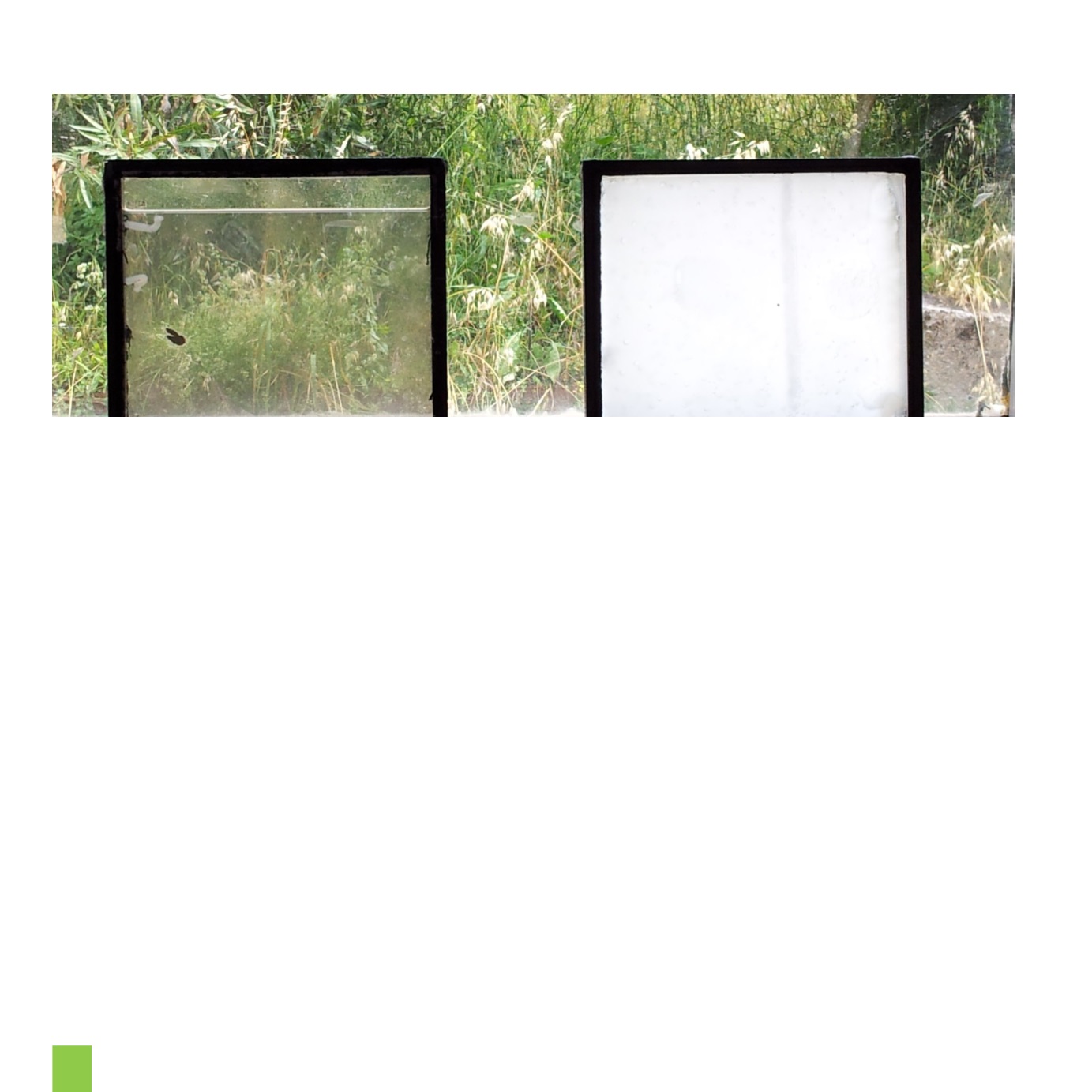

44
ZEB
annual report 2014
Appearance of a PCM window. Left-hand side, transparent when PCM is liquid (hot); Right-hand side, translucent when PCM is solid (cold).
|
Utseende på et vindu med PCM. Til venstre, transparent når PCM er i flytende form (varm); Til høyre, translucent når PCM er i fast form (kald).
The spectral and angular characterisation
of glazing systems that include PCM layers
has been carried out and both the liquid and
the solid state of aggregation of the PCM
(a paraffin wax) have been investigated.
Transmittance, reflectance and absorptance,
for the solar radiation and in the light range,
have been measured for difference beam
angles and with different thicknesses of
PCMs. The experiments have pointed
out the highly diffusive behaviour of the
PCM layer, with increasing weight of the
translucent transmission mode as the PCM
layer thickness increases. Thanks to a better
knowledge of the optical behaviour of these
systems new configurations of PCM windows
can now be simulated using the newly
developed data set of optical properties and
optimisation of such a component can be
carried out for different boundary conditions,
such as climate or building types.
This research has shown that PCM glazing
systems can represent an interesting
technology for the building envelope of
the future because of their optical and
thermal properties. In particular they show
good daylight exploitation, a valuable light
transmission mode (mostly direct-to-diffuse,
which reduces glare discomfort and improves
light distribution), a reduction and time shift
of the peak of solar gains, and the increase
in the thermal mass of the building, while
they still provide the perception of “lightness”,
transparency and light transmission –
important aesthetic issues in buildings.
|
Solenergi spiller en viktig rolle i bygninger.
Den gir tilgang til dagslys og varme gjennom
vinduer og andre transparente bygningsdeler.
Disse bygningskomponentene har derfor
en spesiell betydning for energiytelsen til
bygninger, med innvirkning på soltilskudd,
kjøling og tilgang på dagslys. Transparente
vinduselement/glassruter med PCM,
faseforandringsmaterialer på godt norsk,
er en spennende teknologisammensetning
med egenskaper som ikke finnes i andre
vinduselementer på markedet.
Fasaforandringsmaterialer (PCM)
kjennetegnes av et høyt potensiale for
energilagring som utløses når materialet
gjennomgår faseforandringen. Etter å ha
blitt eksponert for varme begynner stoffet
å smelte og akkumulerer store mengder
termisk energi, som avgis når temperaturen
synker og materialet går over til fast form
igjen. PCM brukes derfor til å lagre energi
i bygninger når det er et varmeoverskudd
og gjør overskuddsvarmen tilgjengelig når
det er behov for den igjen. Siden noen
faseforandringsmaterialer er transparente
er det mulig å lage en bygningskomponent

















